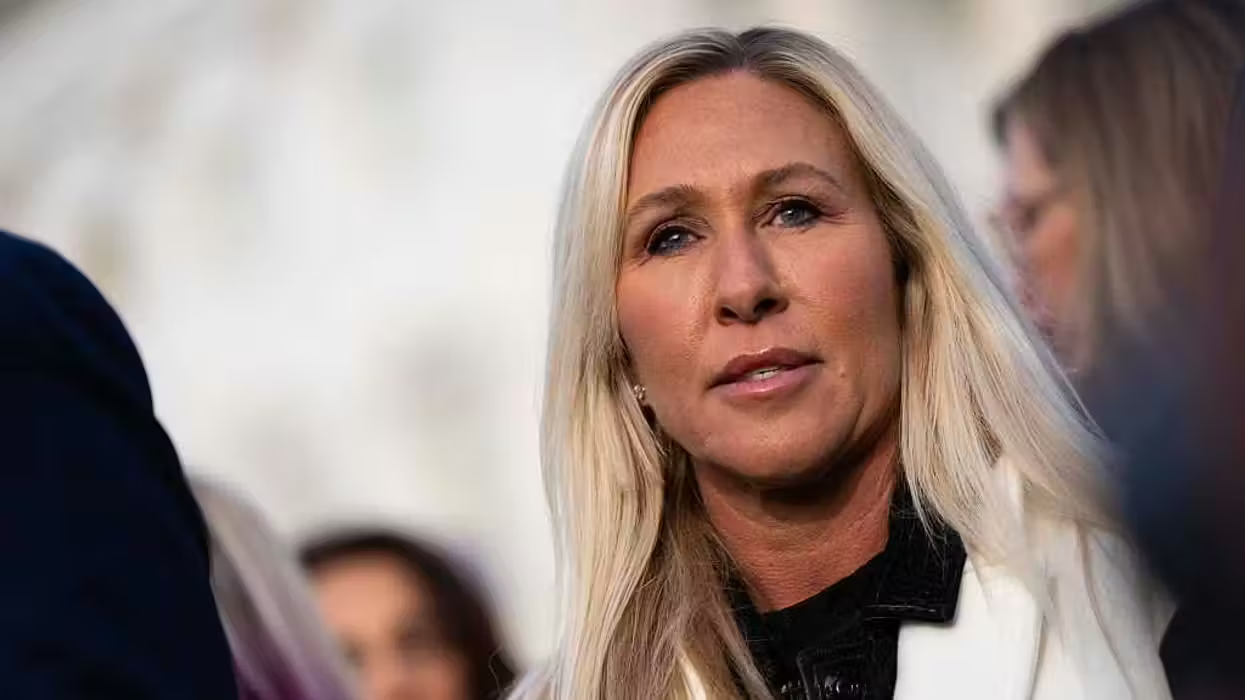
© 2025 Blaze Media LLC. All rights reserved.
NASA Looks at Health Differences Spaceflight Has on Men and Women...and Includes Perceived 'Gender' in New Study
November 19, 2014
"...the health implications of sex and gender differences."
NASA has studied the differences between how men and women adapt to space for more than 20 years, but its most recent study on the topic included a new factor: gender, which in this case refers to how people think of themselves potentially despite the physical body parts with which they were born.
"Although in recent years the definitions have become more nuanced in the clinical community, 'sex' is defined here as the classification of male or female according to an individual's genetics and 'gender' refers to a person's self-representation as male or female based upon social interactions," NASA explained on its Web page about the study published this month in the Journal of Women's Health. "We know that on Earth, major components of the human body are influenced by sex and gender factors. Taking gravity away from the equation imposes an entirely new element on our understanding of the health implications of sex and gender differences."
 This diagram shows key differences between men and women in cardiovascular, immunologic, sensorimotor, musculoskeletal, and behavioral adaptations to human spaceflight.
This diagram shows key differences between men and women in cardiovascular, immunologic, sensorimotor, musculoskeletal, and behavioral adaptations to human spaceflight.
(Image and caption credit: NASA/NSBRI)
According to the study, the inclusion of "gender" was at the recommendation of a 2011 survey that said it was a factor to be considered.
“This is the first major integrated examination of the issues of sex and gender in relationship to space exploration,” Dr. Mark Shelhamer, chief scientist for NASA’s Human Research Program at Johnson Space Center, said in a statement. “There are, in many cases, sex-based differences in the response to the stressors of space flight.”
According to NASA, keeping tabs on the differences both that sexes and genders experience physically and psychologically in space will help "ensure the health and safety of male and female astronauts during long-duration space missions."
The study involved workgroups that investigated published and unpublished research on how human spaceflight can result in physical and behavioral differences in both sex and gender.
As of June 2013, 477 men and 57 women had flown to space. The study included their age, marital status, parental status and educational level as possible factors, because "sex and gender differences as well as these social determinants could impact adaptation to spaceflight."
 Visual Impairment Intracranial Pressure (VIIP) Syndrome was identified in 2005. It is currently NASA’s leading spaceflight-related health risk, and is more predominant among men than women in space. Here, NASA astronaut Karen Nyberg uses a fundoscope to image her eye while in orbit.
Visual Impairment Intracranial Pressure (VIIP) Syndrome was identified in 2005. It is currently NASA’s leading spaceflight-related health risk, and is more predominant among men than women in space. Here, NASA astronaut Karen Nyberg uses a fundoscope to image her eye while in orbit.
(Image and caption credit: NASA)
Here are some of the differences observed (but for a full summary head on over to NASA's website or check out the study):
- Women are more likely to have a hard time standing without fainting upon landing in space than men.
- Visual impairment was experienced more often by male astronauts compared to female astronauts.
- Females were more susceptible to radiation-induced cancers than males.
- There was no sex-specific musculoskeletal response to gravity shifts observed; this response was variable among individuals.
- There were also no sex-specific differences observed in behavioral or psychological responses.
Overall, the study focuses on "sex" differences. But the study authors wrote that they believe both "sex and gender differences will constitute increasingly important components of an overall personalized medicine approach to protecting the health of humans on Earth and in space."
The study suggested that more female astronauts needed to be selected for space missions and that sex and gender both need to be considered as factors in human spaceflight experiments, among other recommendations.
"As efforts continue, there should be an emphasis on the impact of sex and gender on the development of equipment, machine–human interfaces and countermeasures including the use of personalized medicine and genomics or — 'astro-omics,'" Dr. Saralyn Mark with NASA said in a commentary to the study. "Through NASA's collaboration with other agencies, industry, academia and foundations and a focus on sex and gender, the highest level of medical care can be provided to ensure that astronauts are healthy in space and on Earth."
(H/T: io9)
—
Front page image via vicspacewalker/Shutterstock.
Want to leave a tip?
We answer to you. Help keep our content free of advertisers and big tech censorship by leaving a tip today.
Want to join the conversation?
Already a subscriber?
more stories
Sign up for the Blaze newsletter
By signing up, you agree to our Privacy Policy and Terms of Use, and agree to receive content that may sometimes include advertisements. You may opt out at any time.
Related Content
© 2025 Blaze Media LLC. All rights reserved.
Get the stories that matter most delivered directly to your inbox.
By signing up, you agree to our Privacy Policy and Terms of Use, and agree to receive content that may sometimes include advertisements. You may opt out at any time.






